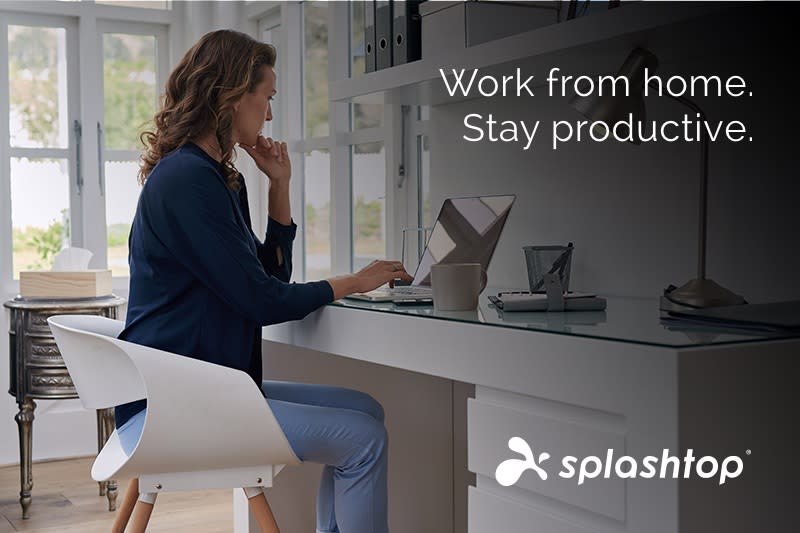At the beginning of the year, the Splashtop leadership team flew to China, Taipei, and Japan for the annual meeting with our Asia teams.
When they left, it was during a festive time for the start of the new Chinese year and celebrations for the Year of the Rat.
No one could imagine that a few weeks later, Splashtop and many other businesses in Asia would close their offices due to the coronavirus outbreak.
Mark Lee, the CEO of Splashtop, firmly believes that "By failing to prepare, businesses are preparing to fail."
With Mark's leadership, Splashtop quickly put in place preventive measures to protect the staff and keep the business running:
In China, Taipei, and Japan, we asked all employees to work from home
We canceled all international corporate travel plans for all offices
In the US and EU, we asked all employees with a weak immune system to start working from home immediately. Those without a fragile immune system were encouraged to WFH if they felt sick or near someone who was ill.
We put PTO paperwork on hold so that any employee who needed to WFH could immediately do so without having to fill any type of form.
In open design offices, we reduced meetings, distributed hand sanitizers, and installed air purifiers
We frequently communicated the need to wash hands and kept all employees informed on recent developments
"We took all these measures with the assumption that the outbreak would be contained in the upcoming warm months. In case that the outbreak does worsen, we have put in place an infrastructure that will allow the entire company to go fully remote," said Mark Lee, Splashtop CEO.
How does Splashtop software work, and why is remote access via Splashtop better than VPN?

While many companies use VPN to work from home, many aren't large enough to support VPNs, either financially or technically, because VPNs require considerable IT time and attention, and they are quite expensive to set up and maintain. Splashtop is not only cost-effective but also easy to set-up, secure, and reliable.
Through the use of Splashtop remote access software, all employees can efficiently work from home by accessing their work computer from any other device connected to the internet, such as mobile phones, tablets, and personal computers.
"I have a Splashtop Business Remote Access subscription and a notebook set up with Streamer installed on the office network. I use Splashtop to access my office notebook from my home computers and mobile devices to access those resources on the office network.
Working from home with Splashtop software is better than taking my computer home because many resources reside on the office network, and some are limited to access from the office network. It is also safer than taking my work computer home and directly connecting via my home network.
What if I lost the computer or someone hacked into my network? Splashtop remote access software adds an extra layer of protection so that I can quickly and safely retrieve any file from the office file server."
– Alex Wu, Asia Manager
Working from Home is Not a Bulletproof Plan

When Splashtop first launched the WFH initiative in Asia, we were lucky to have access to remote software.
Logistics was a big challenge. We are expanding at a fast pace, and that means there are new employees in customer-facing roles.
While ensuring that everyone is trained, has adequate support, and is aware of their tasks is a tough challenge to overcome, we are getting there by communicating and constantly updating processes.
The biggest challenge we faced was the inability to have adhoc meetings, a vital component of a fast-paced startup like ours. These ad hoc meetings represent one of the most significant advantages of working in an office.
In a corporate office, when an employee needs to reach a colleague, he or she can quickly reach out to that colleague by going to their desk. And, in the case input is required from several peers, a group meeting can promptly be set up.
When employees are working from home, setting up ad hoc meetings are quite tricky and often take twice as long when the people working are not online at the same time. We believe that due to this simple hurdle, productivity in our Asia offices has moved from 100% to 70%.
Working From Home Processes to Increase Productivity

To help increase productivity, we added a set of tools to make employees working from home more productive.
In Asia, we are encouraging employees to use WeChat so they can better collaborate in real-time.
In our other offices, we are promoting the use of Microsoft Teams. This initiative seems to be paying off as productivity has moved up to 80%.
However, improvements might also be due to employees getting used to WFH. So if Splashtop provided training to work remotely, productivity might have been higher?
"While we can't go to the office, we can connect from home to the company's network anytime and anywhere without affecting the progress of the work, and this method is very safe.
I haven't been out of the house for 19 days, and I tend to overwork. But I don't think that this is entirely related to coronavirus because I have been working from home previously on several occasions."
– Johnny, System Administrator in China
Johnny's testimony, among many others, highlights a trend validated by several WFH home studies: due to fewer distractions, remote employees can better focus on their tasks.
And in places like Silicon Valley, remote workers save considerable time by avoiding heavy traffic and long commutes.
As a result, employees who work from home tend not only to be more productive but also work longer hours.
Looking Ahead COVID19 – Key Takeaways from the Splashtop Leadership Team

From left to right: Splashtop Co-Founders Rob, Philip, Mark and Thomas
"The COVID-19 outbreak has forced us to work remotely by using our own products. By doing so, we now have personal experiences to share with customers, and we can say that we walk the talk."
– Thomas Deng, Co-Founder, and SVP of Product Management
"While this WFH initiative is temporary, the insights we gathered suggests that we might permanently go fully or partially remote in the future."
– Robert Ha, COO, and co-founder of Splashtop
"This WFH initiative has strengthened Splashtop technical infrastructure to enable employees to work from home more productively."
– Philip Sheu, Co-Founder, and CTO
"Regardless of what path we take from here, enhancing telecommuting capabilities will be at the heart of our business continuity strategy."
– Mark Lee, CEO, and Co-founder of Splashtop
As a business whose core product is remote access technology, Splashtop was fortunate to have access to the right technology readily. That is probably why our company was able to enable employees to work remotely quickly. We are aware that this is not the case for everyone and have decided to do something about it. Click here to find out about Splashtop's WFH initiatives during this time of crisis.

